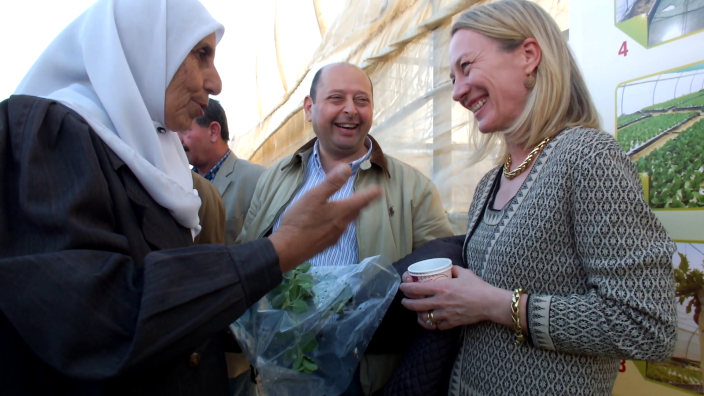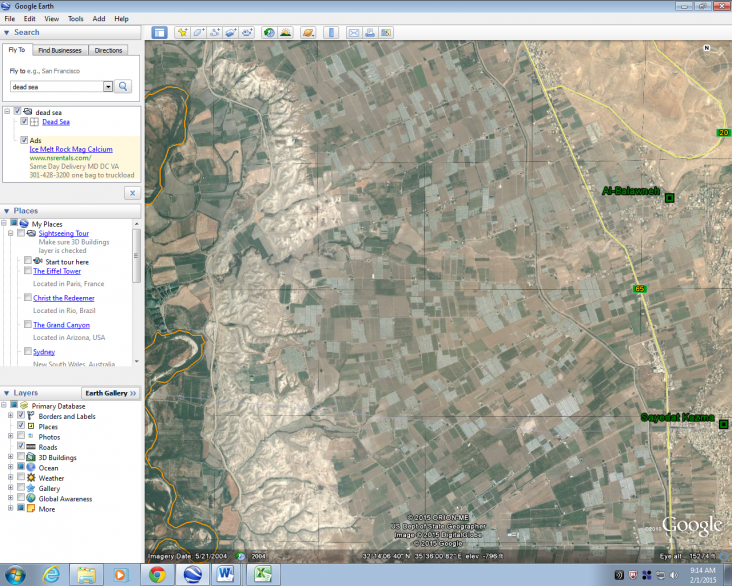BACKGROUND

Water scarcity is an issue affecting all walks of life in Jordan, and requires modern, practical solutions across a number of sectors. Strategic changes are needed in the agricultural sector in particular, which consumes 65% of Jordan’s water supply while contributing only 2.5% of the GDP.
The USAID Hydroponic Green Farming Initiative (HGFI) works to respond to this problem by demonstrating the major advantages of adopting a national campaign to promote hydroponics in Jordan. In addition to increasing revenues, hydroponic techniques also provide a platform to increase economic opportunity and new, competitive skillsets to members of underserved communities. Introducing hydroponic systems to farmers also helps vulnerable groups, such as women and youth, garner workforce skills and vocational training.
Project overview
The USAID Hydroponic Green Farming Initiative is a three-year project implemented by ECO Consult that aims to introduce a model that integrates hydroponic farming and renewable energy generation for large commercial farms and small rural households.
HGFI focuses on the following aspects:
- Improving water efficiency in agriculture through hydroponic systems that use significantly less water than traditional farming practices.
- Strengthening agricultural productivity by increasing the quantity and value of produce.
- Using cost-effective and environmentally-friendly green energy sources for farming instead of fossil fuels.
At its core, USAID HGFI is an input-saving project that tackles issues of scarce resources and economic development by reducing both water and energy consumption. The high “crop per drop” ratio inherent to hydroponic systems is achieved by reusing water runoff and limiting water loss associated with evaporation and percolation. Root mass is much smaller in hydroponic systems, where plants are given nutrients directly and in precise proportions. The end result is lower competition for root space, allowing plants to use more energy to generate leaf mass and increasing the level of cultivation per square meter.
The program works to demonstrate new farming models in rural areas, explain the cost benefits of hydroponics to the farming community, educate the public through training and outreach programs, and connect farmers and households to financing for hydroponic projects. USAID HGFI has the potential to contribute to joint efforts by USAID and the Government of Jordan to introduce training-for-employment opportunities. In terms of hydroponics, this will help targeted groups procure better jobs and promote entrepreneurship amongst farmers.
Activities
USAID HGFI is currently laying the foundation for a national hydroponics campaign, the results of which will be used as building blocks for future activities. Looking ahead, there will be a greater focus on consolidating progress in key areas by:
- Promoting hydroponic technology in established farmer networks and targeted communities throughout the Jordan Valley and highlands.
- Demonstrating the feasibility of hydroponics through field days at HGFI program sites.
- Bridging the gap between traditional agricultural knowledge and hydroponic systems through educational material and training exercises.
- Ensuring prospective farmers have the technical knowledge and funding to access hydroponic technology.
- Focusing on vulnerable demographics – such as women and youth – when designing outreach and dissemination activities.
- Strengthening HGFI’s partnership with established agribusinesses in Jordan to share knowledge and expand marketing opportunities.


Expected outputs
In addition to reducing the amount of water and land used, locations using hydroponic methods have increased production and profit, indicating the likelihood of implementing these methods elsewhere.
A USAID-funded 300 m2 greenhouse in Zarqa, for example, is able to produce 29,000 heads of lettuce (6 harvest cycles) using 216 m3 of water per year through hydroponics. Producing the same amount using conventional farming methods would require 1,000 m2 of land and consume approximately 1,160 m3 of water. To further quantify this, each individual lettuce plant produced hydroponically would need 7.5 liters of water, while conventional farming would require more than 40 liters per plant. Using these figures, overall water savings per year using hydroponics could be more than 80%.
While lettuce crops in Zarqa are yielding promising results like these, community-based organizations like the Bani Kananeh Women’s Charitable Society have also had great success managing and marketing their hydroponic produce. Through the success of local hydroponic projects, the organization has expanded advocacy for these methods amongst the association’s members, many of whom hope to initiate similar projects of their own. Furthermore, meetings with large agribusiness leaders have reinforced the potential for a contract farming initiative that will provide risk assurance and marketing outlets to prospective hydroponic farmers.







Comment
Make a general inquiry or suggest an improvement.